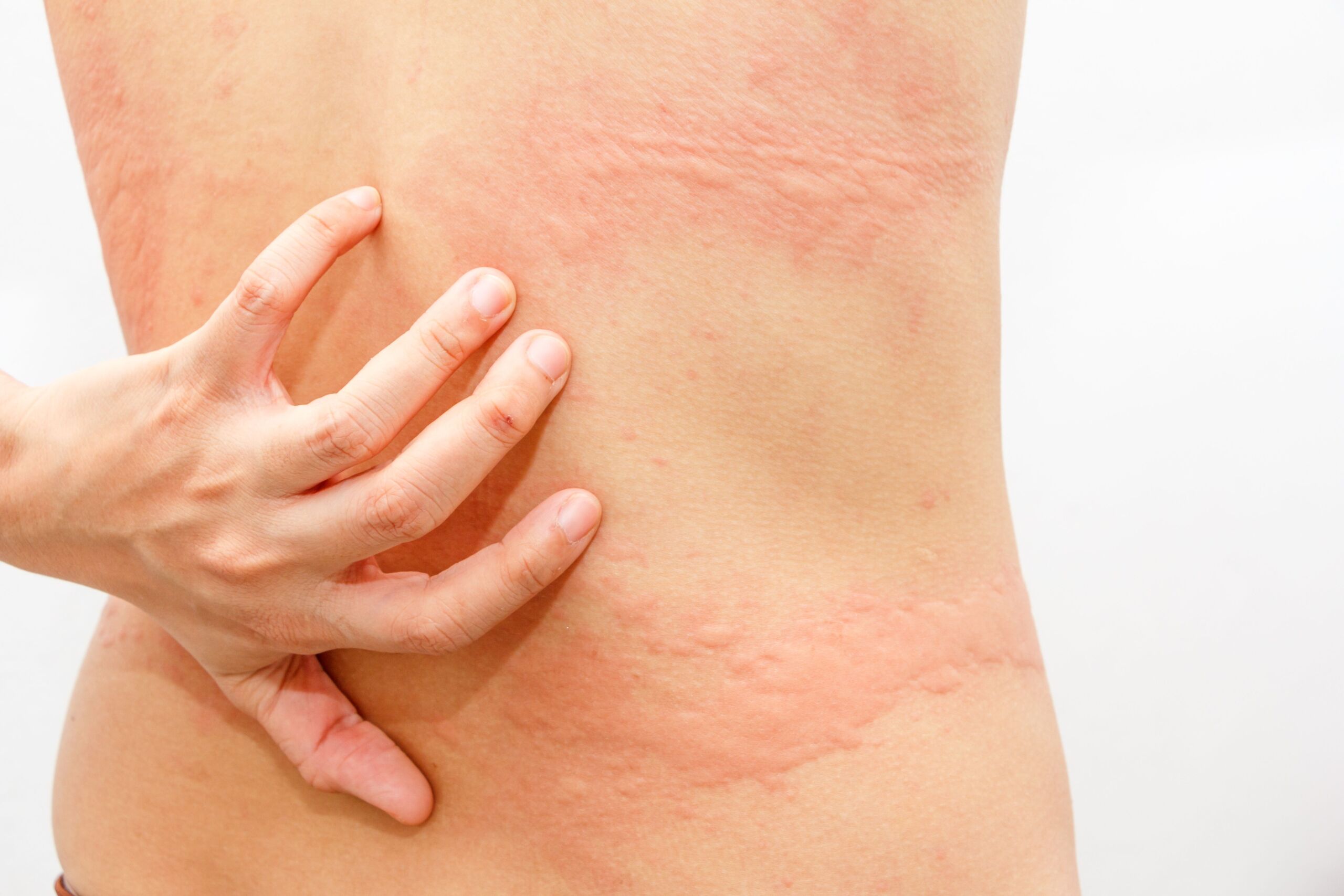Symptoms
Clinically, urticaria presents with sudden, intensely itchy wheals, i.e. skin swellings surrounded by a red fringe. The individual skin lesions are usually transient and persist for less than 24 hours. If the skin swellings are deeper in the dermis or in the fatty tissue adjacent to it, it is called angioedema (also called Quincke’s edema). These deep-seated dermal swellings are more often painful than itchy. They persist longer than the urticarial skin lesions, sometimes up to several days.

Diagnostics
In a detailed discussion with the affected person and by means of various blood tests and skin tests, we determine the trigger or triggers.
- Acute urticaria: Usually triggered by a food, drug or insect sting allergy. If the trigger is known, it is central to avoid contact with it.
- Chronic urticaria: Usually it is not allergic. Here we determine factors that can aggravate the clinical picture, such as pressure, cold or physical exertion, but also medications, infections or the presence of special immune factors.
Treatment
Together with you, we will determine an individual treatment plan. We will be happy to advise you on how to avoid aggravating factors and which foods or medications are not suitable for you because they can trigger an urticaria flare-up.
A wide variety of medications are available for internal use (for ingestion), but also creams and ointments for external use (as well as shower/bath products), which are particularly effective in relieving itching.
Article Skin Advisor
